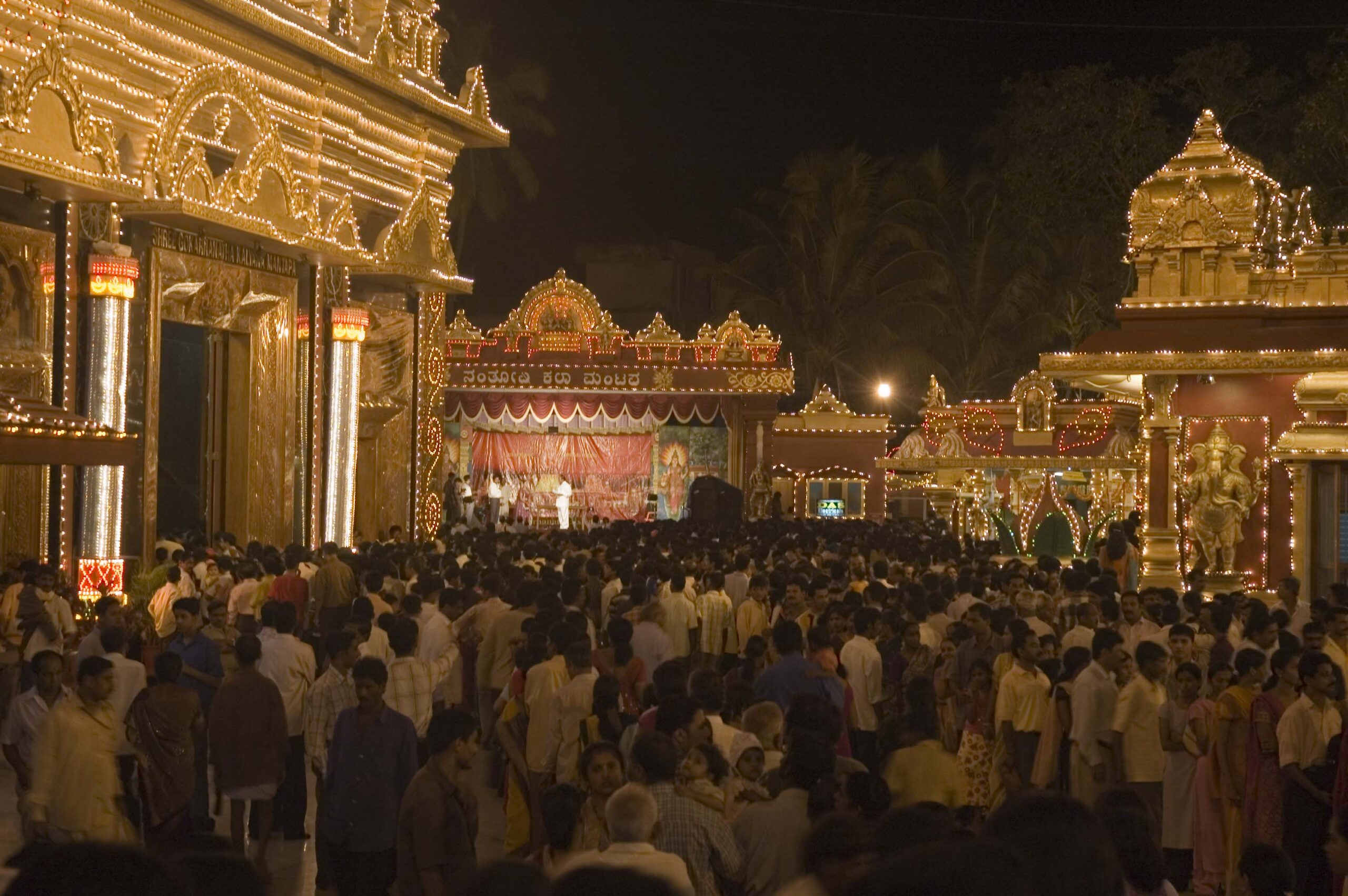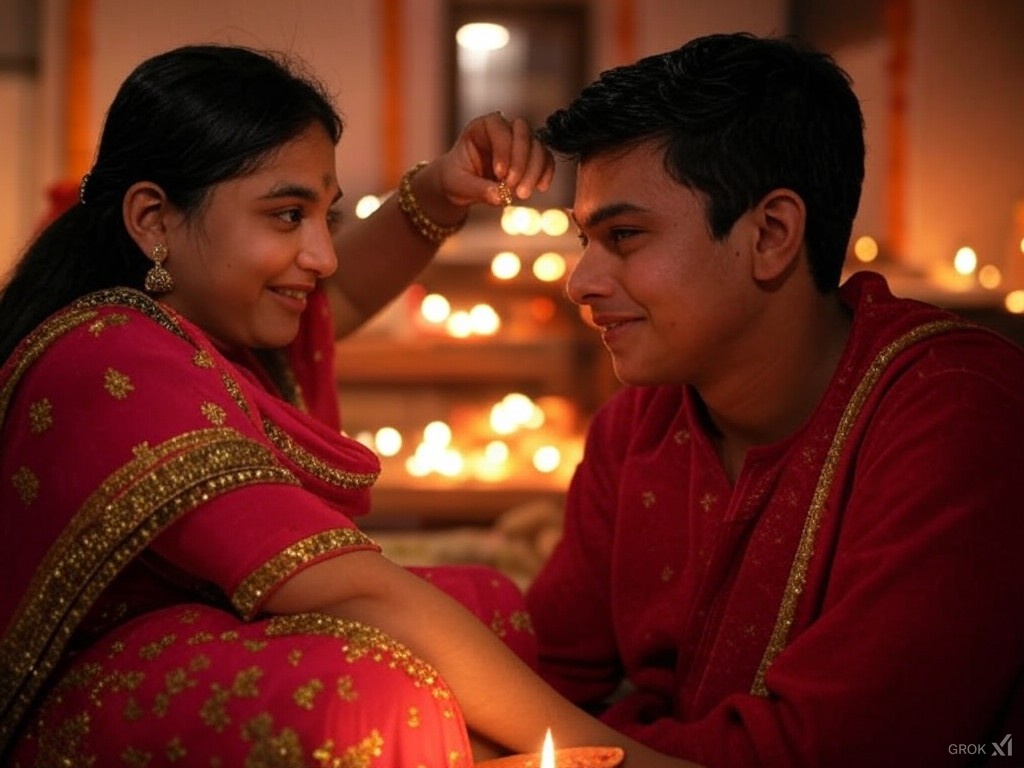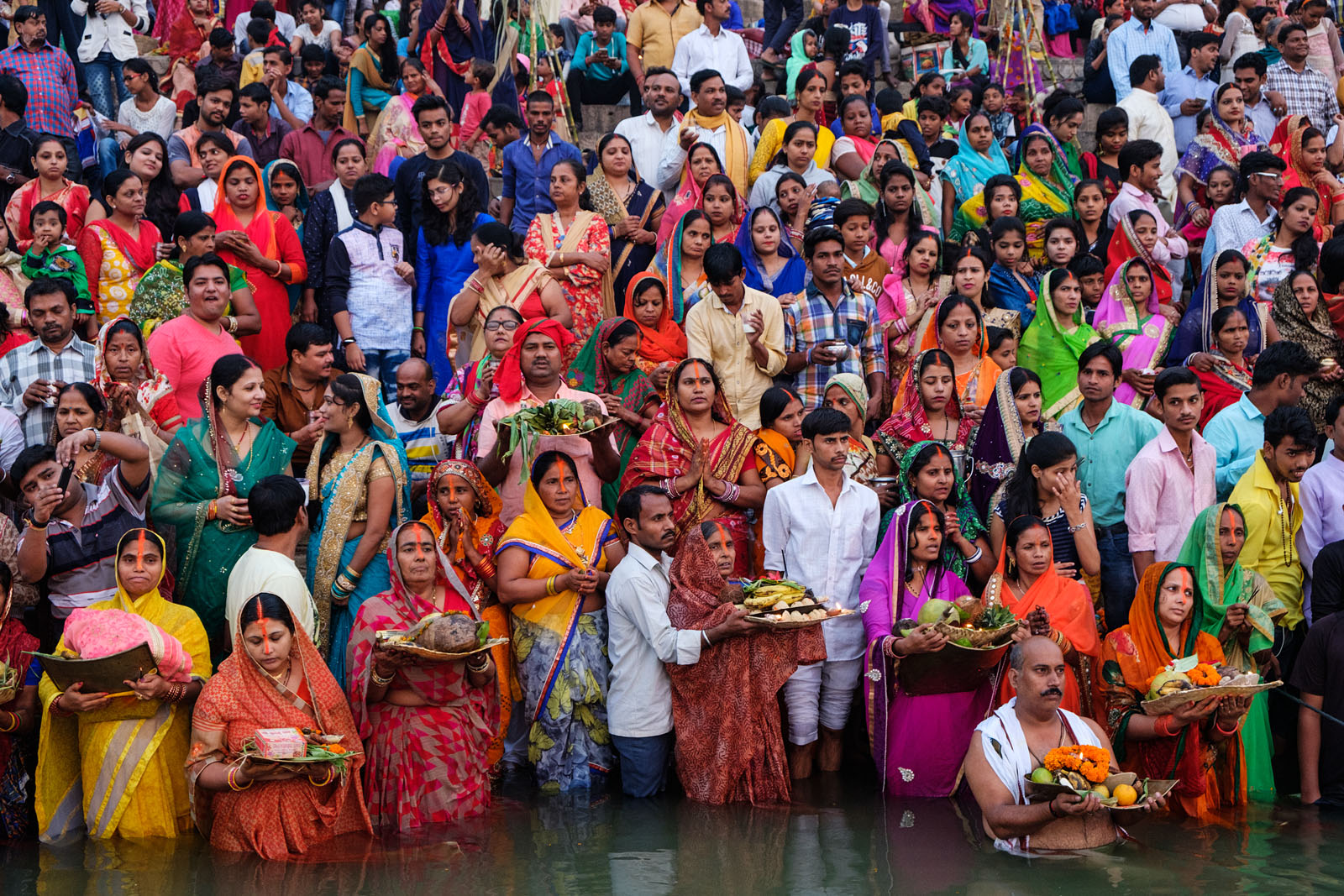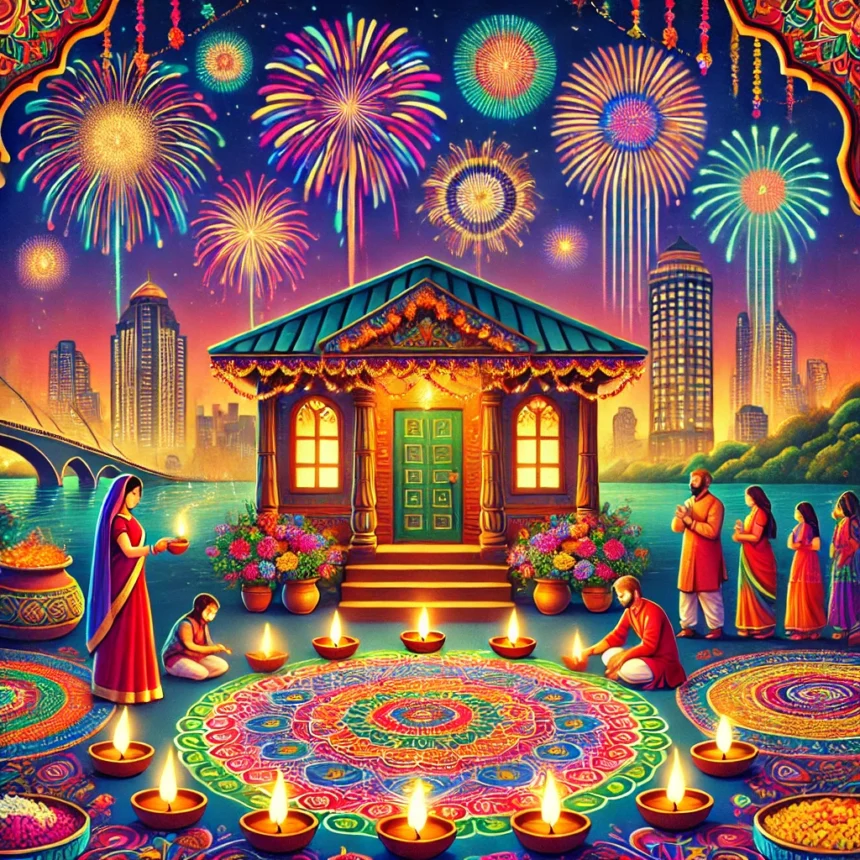Diwali Celebrations: Understanding Symbolism, Spiritual Lessons
Understanding Diwali Symbolism
In the second part of our exploration of Diwali Celebrations, we delve into the deeper spiritual meanings and symbolic teachings associated with the festival and other aspects of celebrations. This period marks not only a time of festivity but also a profound reflection on the lessons from the life of Rama, the Purushottama, or ‘Supreme Being’. Through the narrative of Rama, Diwali Celebrations encourages virtues of courage, loyalty, and moral integrity. This section explores the symbolic significance of the rituals and the spiritual lessons embedded within the Diwali celebrations, revealing how they guide individuals toward higher ethical and spiritual aspirations.
The Diwali Period Celebrations: A Festive Cycle
Diwali is not a single-day festival but a vibrant tapestry of celebrations that unfold over nearly a week. This festive cycle begins two days before Diwali and extends up to Chhath Puja, showcasing the diverse cultural fabric of India.
Dhanteras
The festivities commence with Dhanteras, the first day of the five-day Diwali festival. Considered an auspicious day for buying utensils, gold, and other metals, Dhanteras is dedicated to wealth. People perform Lakshmi Puja in the evening, praying for prosperity and well-being.
Naraka Chaturdashi (Chhoti Diwali)
The second day, Naraka Chaturdashi, or Chhoti Diwali, commemorates Lord Krishna’s victory over the demon Narakasura. This day is marked by lighting lamps, bursting firecrackers, and preparing sweets and delicacies for the main Diwali celebration.
Diwali

Govardhan Puja (Annakut)
The day after Diwali, Govardhan Puja is celebrated with great fervor. Devotees prepare and offer a vast array of vegetarian dishes to Lord Krishna, expressing gratitude for his protection. This day honors the puja of Govardhan Hill and the reverence of cows, which are decorated and worshiped. The festival commemorates the legend of Lord Krishna lifting Govardhan Hill to shield the villagers of Vrindavan from torrential rains, symbolizing God’s protection for those with true faith. In many parts of India, particularly in rural areas, Govardhan Puja is celebrated with traditional folk dances, music, and community gatherings.
Bhai Dooj

Bhai Dooj, celebrated on the fifth day of the Diwali festival, is a heartwarming celebration of the bond between brothers and sisters. Sisters perform aarti for their brothers, praying for their long life and prosperity. In return, brothers offer gifts as a token of love and protection. This festival strengthens the bond of care and affection between siblings, fostering a sense of responsibility and loyalty. Bhai Dooj is also an opportunity for families to come together, share meals, and reinforce their ties.
Chhath Puja

These festivals collectively emphasize renewal, kinship, gratitude, and devotion, reflecting the rich spiritual and cultural ethos of India. Each celebration during the Diwali period brings its unique flavors and rituals, creating a continuum of festivity that enhances social and familial bonds.
Symbolism and Spiritual Lessons
As we conclude the detailed descriptions of the Diwali festivities, let us circle back to the core themes of the festival. Here we’ll reflect on the deeper symbolism and spiritual teachings that these celebrations embody and perpetuate among participants.
Diwali, as a festival, is rich with symbolic meanings that resonate deeply within the Indian ethos and beyond.
- Knowledge over Ignorance: The lighting of lamps is a metaphor for knowledge, effectively dispelling the darkness of ignorance. Homes filled with light symbolize an enlightened mind where there is no room for ignorance or misunderstanding.
- Purity and Eradication of Greed: The practice of cleaning homes before Diwali and decorating them with lights and rangolis represents a desire to rid oneself of any impurities from the past and make a fresh start. The association with Goddess Lakshmi also emphasizes the aspect of purity and the avoidance of greed, as she is the goddess of wealth and prosperity who favors the righteous.
- Prayer to Goddess Lakshmi: In many households, a special puja dedicated to Goddess Lakshmi is performed to seek her blessings for the household. This ritual is aimed at ensuring a year filled with abundant prosperity and wealth.
Like most Hindu festivals Diwali also encourages individuals to engage in self-reflection, looking within to find the spiritual light that guides them toward right action and higher thought. It serves as a reminder that the pursuit of knowledge and purity is not only a personal journey but a communal aspiration that enhances societal harmony and spiritual upliftment.
Revisiting Diwali Celebrations: Addressing Concerns of Pollution Misconceptions
While celebrating Diwali’s rich symbolism and teachings, it’s crucial to address a contemporary issue—environmental concerns associated with the festival. Let’s explore how Diwali impacts urban air quality, particularly focusing on the common misconceptions surrounding its celebration in Delhi.
The narrative surrounding Diwali and its association with increased air pollution in Delhi often overlooks the broader context of environmental conditions that contribute to the city’s overall air quality. While it is commonly perceived that Diwali significantly exacerbates Delhi’s pollution through the burning of firecrackers, an in-depth analysis of the data suggests that this view might be overstated.
Our extensive examination of the Air Quality Index (AQI) from 2018 to 2025 reveals that while there are slight increases in pollution levels during Diwali, these changes are not significantly out of step with the general air quality issues that Delhi faces due to other more persistent sources. Seasonal factors such as temperature drops and reduced wind speed during the winter months play a substantial role in affecting air quality, often exacerbating the pollution levels more critically than the Diwali period itself.
In the context of these findings, it becomes clear that addressing Delhi’s air pollution requires a comprehensive approach that goes beyond focusing solely on the activities during Diwali. Systemic issues such as vehicular emissions, industrial activities, and regional agricultural practices contribute more significantly to the air quality deterioration throughout the year.
For those interested in exploring this topic further, our detailed blog post Diwali Celebrations in Delhi and Pollution provides a nuanced analysis. It delves into the monthly and seasonal AQI trends, offering insights that challenge the prevalent notion of Diwali as a major pollution event. This post aims to shift the dialogue towards more sustainable and effective solutions to tackle the capital’s air pollution crisis holistically.
By understanding the real contributors to air pollution and debunking common texts about Diwali’s impact, we can foster a more informed approach to environmental stewardship in Delhi. This allows for a celebration of Diwali that honors tradition while being mindful of our environmental responsibilities, ensuring that the festival of lights remains a joyous occasion for all, without undue blame for the city’s broader air quality challenges.
Modern Relevance of Diwali Celebrations
Having addressed the environmental concerns, we can now appreciate Diwali’s continued relevance in the modern world. This next section explores how the festival fosters community spirit and cultural heritage in today’s fast-paced global environment.
Diwali’s enduring appeal in a globalized world speaks volumes about its intrinsic values and cultural significance. This festival of lights plays a crucial role in fostering familial bonds and enhancing community spirit. In an era where life moves at a breakneck pace, Diwali celebrations provide a cherished opportunity to slow down and reconnect with loved ones, reviving traditions that are often overshadowed by the demands of modern life.
Moreover, festival of Diwali promotes cultural heritage and traditional values, serving as a cultural bridge that brings people together, not just within India but also in the vast Indian diaspora worldwide. Celebrations around the globe see individuals of various backgrounds partaking in Diwali events, which showcases the richness of Indian culture and its adaptability to different environments, thus strengthening communal ties and fostering mutual respect among diverse populations.
Reflections on Spiritual Aspects of Diwali Celebrations
With a renewed understanding of Diwali’s relevance today, let us delve deeper into the spiritual aspects that form the foundation of this festival.
As we conclude our exploration of Diwali’s symbolic and spiritual significance, it becomes clear that the festival transcends mere celebration. It serves as a beacon of inner growth, purity, and wisdom. The enduring teachings of Diwali encourage us to reflect and live by the virtues of righteousness and enlightenment in our daily lives. As the physical lights dim, the spiritual lessons continue to resonate, inspiring us to overcome ignorance and darkness with knowledge and light, year after year.
Feature Image: Click here to view the image.
Visit our YouTube Channel by clicking here.
Follow us on our social median handles
Glossary of Terms:
- Diwali: Often referred to as the Festival of Lights, Diwali is a major Indian festival celebrated by Hindus, Sikhs, Jains, and Buddhists, marking the victory of light over darkness and knowledge over ignorance.
- Purushottama: A Sanskrit term used in Hindu philosophy that translates to ‘Supreme Being’. It is often used to describe Lord Rama, who is considered an exemplar of virtue and the ideal man.
- Lakshmi Puja: A Hindu ritual where devotees worship Goddess Lakshmi, who is considered the goddess of wealth, fortune, and prosperity. This ritual is performed during Diwali to seek blessings for wealth and well-being.
- Dhanteras: The first day of the five-day Diwali festival, regarded as auspicious for buying utensils and precious metals like gold and silver, symbolizing wealth and prosperity.
- Naraka Chaturdashi (Chhoti Diwali): The second day of Diwali, associated with the story of Lord Krishna’s victory over the demon Narakasura, symbolizing the triumph of good over evil.
- Govardhan Puja (Annakut): Celebrated the day after Diwali, devotees prepare and offer a large variety of vegetarian food to Lord Krishna as a mark of gratitude, commemorating the day Krishna protected the villagers of Vrindavan from torrential rains by lifting the Govardhan Hill.
- Bhai Dooj: A celebration on the last day of Diwali, dedicated to the bond between brothers and sisters. Sisters perform a ritual aarti for their brothers and pray for their long life and prosperity.
- Chhath Puja: A festival dedicated to the Sun God, celebrated soon after Diwali, particularly in the regions of Bihar and Uttar Pradesh. Devotees perform rigorous rituals that include holy bathing, fasting, and offering prayers to the Sun.
- Air Quality Index (AQI): A numerical scale used to communicate the quality of air in a particular area, indicating levels of pollution and potential health impacts.
- Cultural Heritage: Practices, expressions, knowledge, and skills—as well as the instruments, objects, artifacts, and cultural spaces associated therewith—that communities recognize as part of their cultural heritage.
Top #Tags: #Diwali2025 #SpiritualDiwali #DiwaliSymbolism #DiwaliLessons #EcoFriendlyDiwali



Leave a Reply